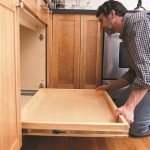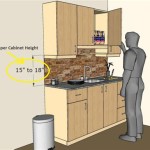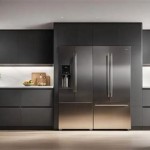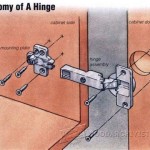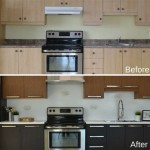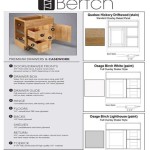How Much Does It Cost To Vinyl Wrap Kitchen Cupboards?
Vinyl wrapping has emerged as a popular method for updating kitchen cupboards, offering a cost-effective alternative to complete replacement or repainting. This process involves applying a thin, adhesive vinyl film over the existing cupboard surfaces, transforming their appearance and potentially extending their lifespan. Understanding the costs associated with vinyl wrapping is crucial for homeowners considering this renovation option.
The total cost of vinyl wrapping kitchen cupboards is influenced by several factors, encompassing materials, labor, and the complexity of the project. A comprehensive understanding of these cost drivers is essential for obtaining accurate estimates and making informed decisions.
Factors Influencing the Cost of Vinyl Wrapping
Several key factors affect the overall expense of vinyl wrapping kitchen cupboards. These factors can be broadly categorized into material costs, labor costs, and preparation requirements.
Material Costs: The type and quality of vinyl film selected significantly impact the overall cost. Vinyl films vary in terms of thickness, finish (matte, gloss, satin, textured), durability, and brand. Higher-quality films are generally more expensive but offer increased longevity, resistance to scratches and fading, and a more realistic appearance, particularly when mimicking wood grain or other textures. Thicker films are easier to work with and are more forgiving to imperfections on the existing cabinet surfaces, making them a preferred choice for DIY projects or for those with less experience.
The amount of vinyl film required is directly proportional to the surface area of the cupboards being wrapped. Larger kitchens with more cabinets will naturally require more material, increasing the total cost. It's crucial to accurately measure the dimensions of each cupboard door, drawer front, and cabinet side to estimate the necessary amount of vinyl. It is always wise to add a buffer (typically 10-15%) to account for waste during cutting and installation. Speciality films, such as metallic, carbon fiber, or textured vinyl, are typically more expensive than standard solid-color films.
Additionally, the cost of ancillary materials should be factored in. These include items like primers, edge sealers, application tools (squeegees, heat guns, cutting tools), and cleaning supplies. While these materials may represent a smaller portion of the overall cost, they are essential for achieving a professional and durable finish.
Labor Costs: The cost of labor is a significant contributor to the overall expense, especially when hiring professional installers. Labor rates vary depending on the installer's experience, location, and the complexity of the project. More experienced installers may charge higher hourly rates but can often complete the job more efficiently, minimizing the overall labor cost. Geographic location also plays a role, with labor rates typically being higher in metropolitan areas compared to rural areas.
The complexity of the project influences the amount of time required for installation, directly impacting labor costs. Cabinets with intricate designs, curved surfaces, or multiple crevices require more meticulous application, increasing the labor time. Preparing the surfaces, including cleaning, sanding, and priming, also contributes to the overall labor time. The need to carefully remove handles, hinges and other hardware and then reinstalling them also adds to the labour required.
Some homeowners opt for DIY vinyl wrapping to save on labor costs. While this can be a cost-effective option, it requires patience, precision, and a certain degree of skill. It's important to realistically assess one's capabilities before undertaking a DIY project, as mistakes can be costly and time-consuming to rectify.
Preparation Requirements: The condition of the existing cupboard surfaces significantly impacts the amount of preparation required, which in turn affects the overall cost. Cupboards with smooth, clean surfaces require minimal preparation, typically involving cleaning and degreasing. However, cupboards with damaged surfaces, such as chips, cracks, or peeling paint, require more extensive preparation, including filling imperfections, sanding, and priming. This additional preparation adds to both the material and labor costs.
Cleaning the cupboards thoroughly is essential for ensuring proper adhesion of the vinyl film. Any grease, dirt, or grime remaining on the surfaces can compromise the bond, leading to bubbling or peeling. Sanding may be necessary to create a slightly roughened surface, providing a better key for the adhesive. Priming is often recommended, especially on porous surfaces or when using lighter-colored vinyl films, to prevent the underlying color from bleeding through.
The amount of time spent on preparation directly influences the success of the vinyl wrapping project. Proper preparation is crucial for achieving a smooth, durable, and aesthetically pleasing finish.
Estimating the Cost: DIY vs. Professional Installation
The approach chosen for vinyl wrapping kitchen cupboards, whether DIY or professional installation, significantly impacts the overall cost. Each option presents its own set of advantages and disadvantages in terms of cost, time commitment, and final result.
DIY Vinyl Wrapping: Opting for a DIY approach can significantly reduce the overall cost by eliminating labor expenses. The primary costs associated with DIY vinyl wrapping are the materials—vinyl film, application tools, and preparation supplies. The cost of these materials can vary depending on the quality and quantity required. For example, a standard roll of vinyl film suitable for a small kitchen might cost between $50 and $150. Application tools, such as squeegees and heat guns, can range from $20 to $50. Preparation supplies, including cleaners, sandpaper, and primer, typically cost around $20 to $50. Factoring in potential mistakes and waste, it's prudent to budget for slightly more material than initially estimated.
However, DIY vinyl wrapping requires a significant time commitment and a certain degree of skill. It involves careful planning, precise cutting, and meticulous application. The time required for a DIY project depends on the size and complexity of the kitchen, as well as the individual's experience. A small kitchen with simple cabinet designs might take a weekend to complete, while a larger, more complex kitchen could take several days or even weeks.
The quality of the final result in a DIY project depends heavily on the individual's skill and attention to detail. Imperfections, such as bubbles, wrinkles, or uneven edges, can detract from the overall appearance. While DIY vinyl wrapping can be a cost-effective option for those with experience and a knack for DIY projects, it may not be suitable for individuals who lack the necessary skills or time.
Professional Installation: Hiring professional installers offers several advantages, including expertise, efficiency, and a high-quality finish. Professional installers have the knowledge and experience to handle complex cabinet designs, intricate surfaces, and potential challenges. They also have access to professional-grade tools and materials, ensuring a durable and aesthetically pleasing result. The cost of professional installation typically includes both labor and materials. Labor costs vary depending on the installer's experience, location, and the complexity of the project. Material costs are usually factored into the overall estimate.
The cost of professional installation can range from $50 to $200 per cabinet door or drawer front, depending on the factors mentioned above. This estimate includes the cost of vinyl film, application tools, and preparation materials. The overall cost for a standard-sized kitchen can range from $500 to $3,000 or more, depending on the number of cabinets and the complexity of the design. While professional installation is more expensive than DIY vinyl wrapping, it offers the peace of mind of knowing that the job will be done correctly and efficiently.
Choosing between DIY and professional installation depends on individual circumstances, including budget, time availability, and skill level. Homeowners who are comfortable with DIY projects and have the necessary skills may opt for DIY vinyl wrapping to save on labor costs. However, homeowners who prioritize a high-quality finish and prefer to avoid the hassle of DIY may choose professional installation.
Breaking Down the Costs Further: Examples and Scenarios
To illustrate the cost variations in vinyl wrapping kitchen cupboards, several scenarios are helpful. These scenarios consider different kitchen sizes, material choices, and installation methods.
Scenario 1: Small Kitchen, DIY Installation
Consider a small kitchen with ten cabinet doors and five drawer fronts. The homeowner opts for a standard solid-color vinyl film, costing $80 per roll. Assuming one roll is sufficient for the project, the material cost is $80. Application tools and preparation supplies, including squeegees, heat gun, cleaner, sandpaper, and primer, cost approximately $50. The total cost for this DIY project is estimated at $130. The time required for the project is approximately 16 hours (two working days).
Scenario 2: Medium Kitchen, Professional Installation
Consider a medium-sized kitchen with fifteen cabinet doors and eight drawer fronts. The homeowner hires a professional installer to vinyl wrap the cupboards. The installer charges $100 per door/drawer, including materials and labor. The total cost for this professional installation is estimated at $2,300. The installation time is approximately 8 hours (one working day).
Scenario 3: Large Kitchen, High-End Materials, Professional Installation
Consider a large kitchen with twenty cabinet doors and twelve drawer fronts. The homeowner chooses a high-end textured vinyl film that mimics wood grain, costing $150 per roll. The professional installer charges $120 per door/drawer including materials and labor. The total cost for the professional installation is estimated at $3,840. The installation time is approximately 12 hours (one and the half working days).
Scenario 4: Small Kitchen, DIY Installation with Premium Vinyl
Consider the same small kitchen as in Scenario 1 (ten cabinet doors and five drawer fronts), but the homeowner chooses a premium, textured vinyl film costing $120 per roll. Assuming more wastage due to the textured finish, two rolls are purchased at a cost of $240. Higher quality application tools are also acquired, costing $80. The total cost for this DIY project is estimated at $320. The increased complexity due to the textured vinyl may extend the time required to approximately 24 hours (three working days).
These scenarios highlight the range of costs associated with vinyl wrapping kitchen cupboards, depending on the size of the kitchen, the type of vinyl film selected, and the installation method chosen. Detailed research and compare quotes from multiple professional installers is prudent. For DIY projects, thorough preparation and understanding of the process is critical to successfully complete the task.

How Much Does Kitchen Door Wrapping Cost In 2024 Checkatrade

How Much Does Kitchen Door Wrapping Cost In 2024 Checkatrade

How Much Does Kitchen Door Wrapping Cost In 2024 Checkatrade

Spray Paint Or Vinyl Wrap For Kitchen Cupboards Upvc Painting

Is It Better To Paint Or Vinyl Wrap Kitchen Cupboards

Vinyl Wrap For Kitchen Cupboard Doors Restoration

Are Vinyl Wrap Kitchens Any Good Wespray

Kitchen Wrapping Cost S 2024 This Please

Re Bubbling Or Ling Vinyl Wrap Kitchens With Spray Painting Wespray

How To Vinyl Wrap Kitchen Doors Checkatrade
Related Posts

